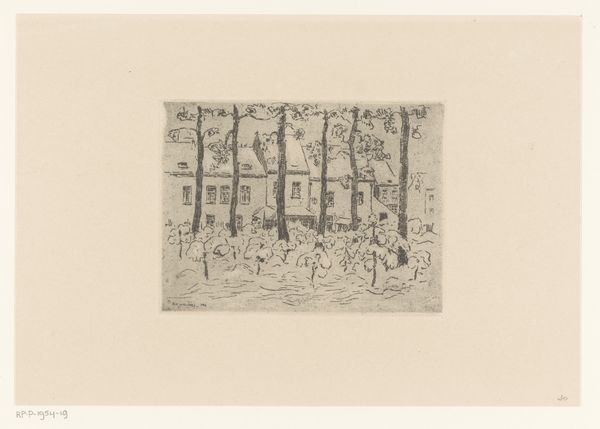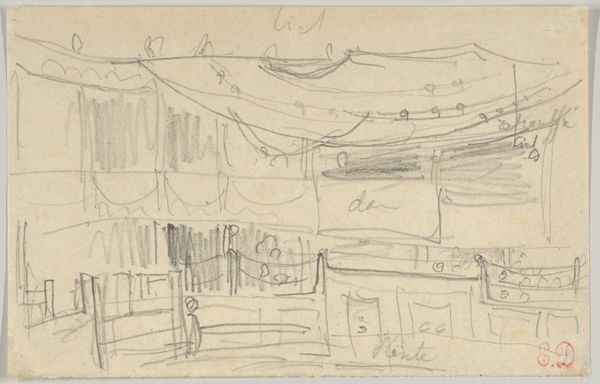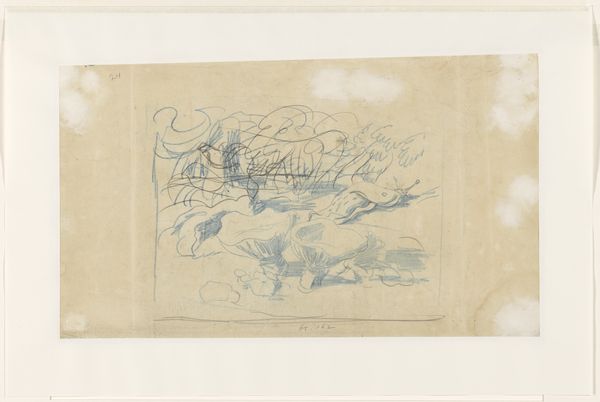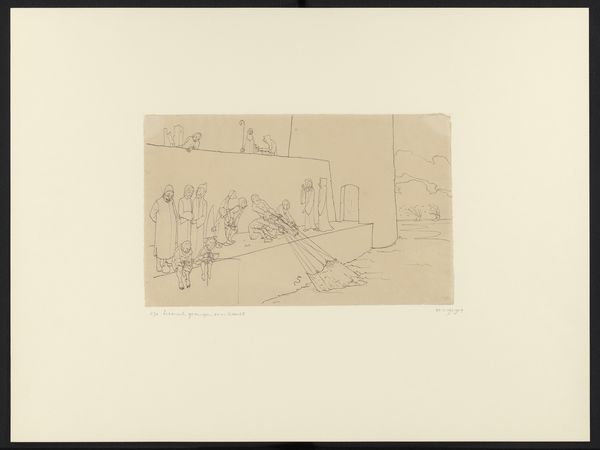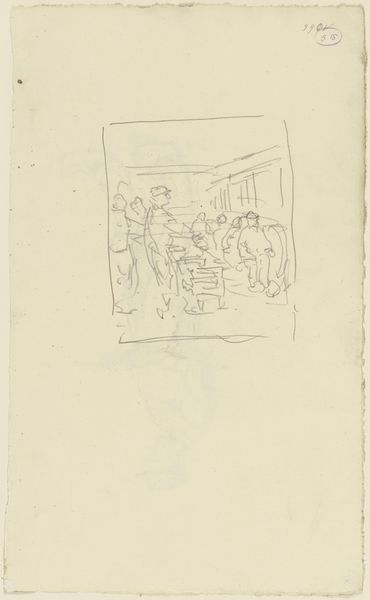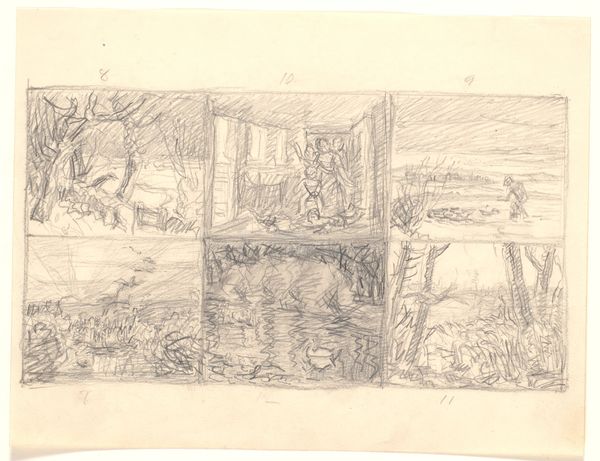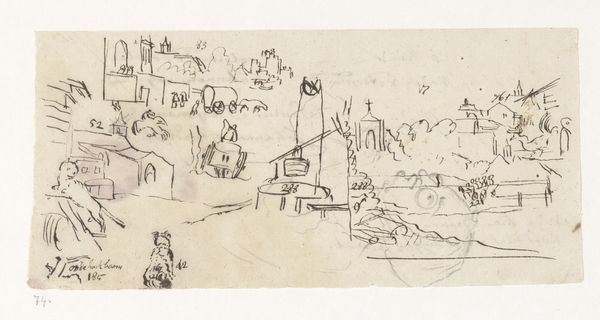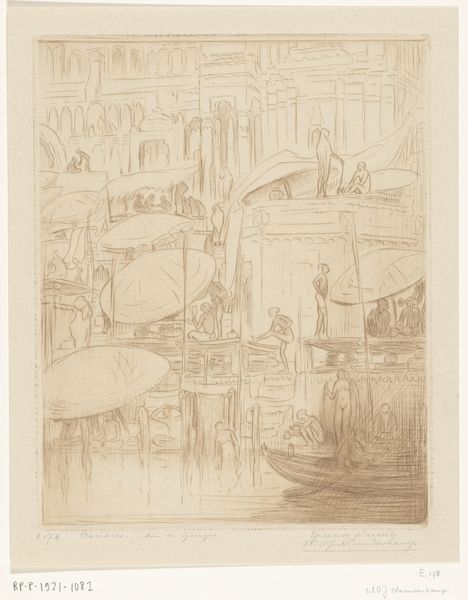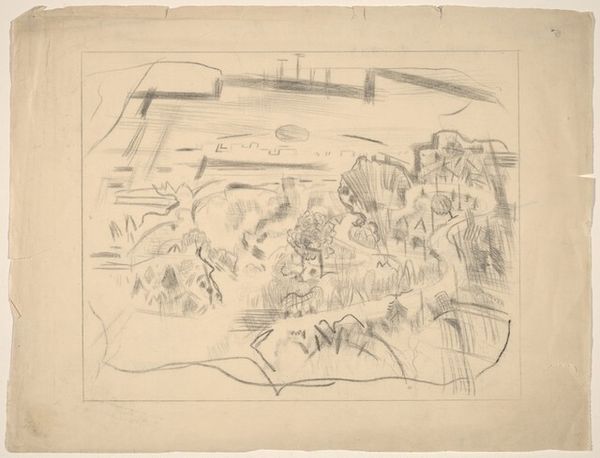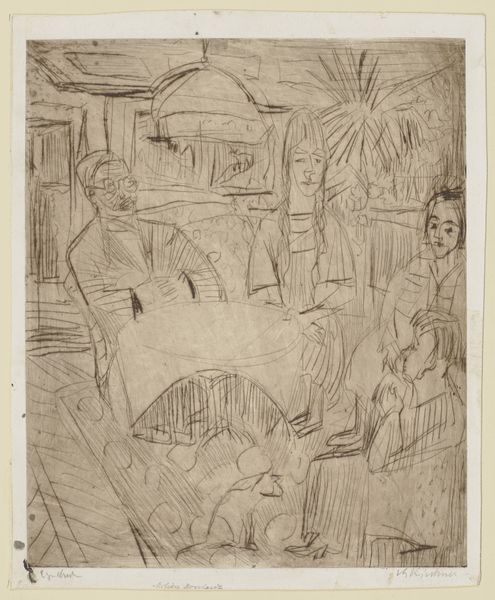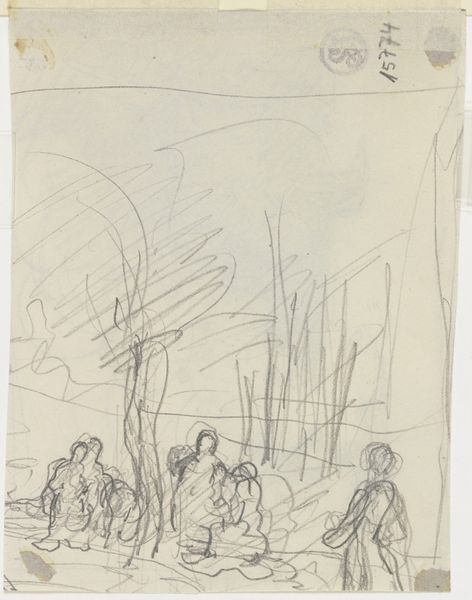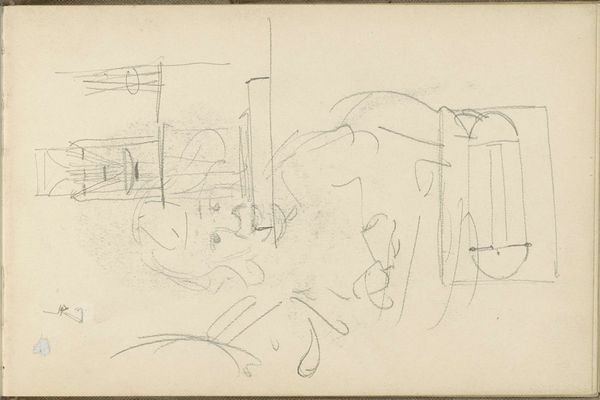
Dimensions: 6 1/8 x 6 1/8 in. (15.6 x 15.6 cm)
Copyright: Public Domain
Curator: This graphite drawing, dating from 1910, is a study by Umberto Boccioni for his painting "The Riot," currently housed at the Metropolitan Museum of Art. When I look at it, I feel as though the entire image plane is buzzing with contained rage. Editor: Rage is definitely a central emotion. I notice the seemingly frenzied figures huddled at the bottom and this gridlike structure presiding above like silent authorities. What societal issues might Boccioni have been responding to with "The Riot"? Curator: I believe the "Riot" drawings reflected Boccioni’s feelings about societal and political upheaval in early 20th century Italy, a country in the midst of rapid industrialization and social unrest. Futurism, with its desire to capture the speed and dynamism of the modern world, proved an ideal artistic lens. Editor: The choice of graphite captures the Futurists' focus on line and movement quite effectively. Look at how these frenetic marks and lines construct human bodies caught in a whirlwind of implied activity. Yet what exactly is going on escapes legibility... Curator: Precisely. Though this work’s dynamism is apparent, its symbolism remains intriguingly elusive. Are those figures coalescing or fighting? Are those structural elements windows, stages, or constraints? Such deliberate ambiguity encourages reflection and debate. For Boccioni, an artwork was perhaps less an authoritative statement than a provocation for intellectual engagement. Editor: Absolutely. And this preparatory sketch highlights a vital tension present in much Futurist art – its simultaneous embrace of modernity and underlying anxiety regarding societal change. In that respect, this drawing stands as an unresolved visual debate that we viewers must ultimately take part in. Curator: It's that ongoing, even unresolved energy that makes Boccioni's works perpetually relevant, almost as though he intended this little study to remain permanently, electrifyingly…in process. Editor: Boccioni leaves us space to write the story for ourselves, not just to understand Futurism, but to apply those ideas of progress and dynamism to our world and consider where those energies can, for better or worse, lead.
Comments
No comments
Be the first to comment and join the conversation on the ultimate creative platform.

